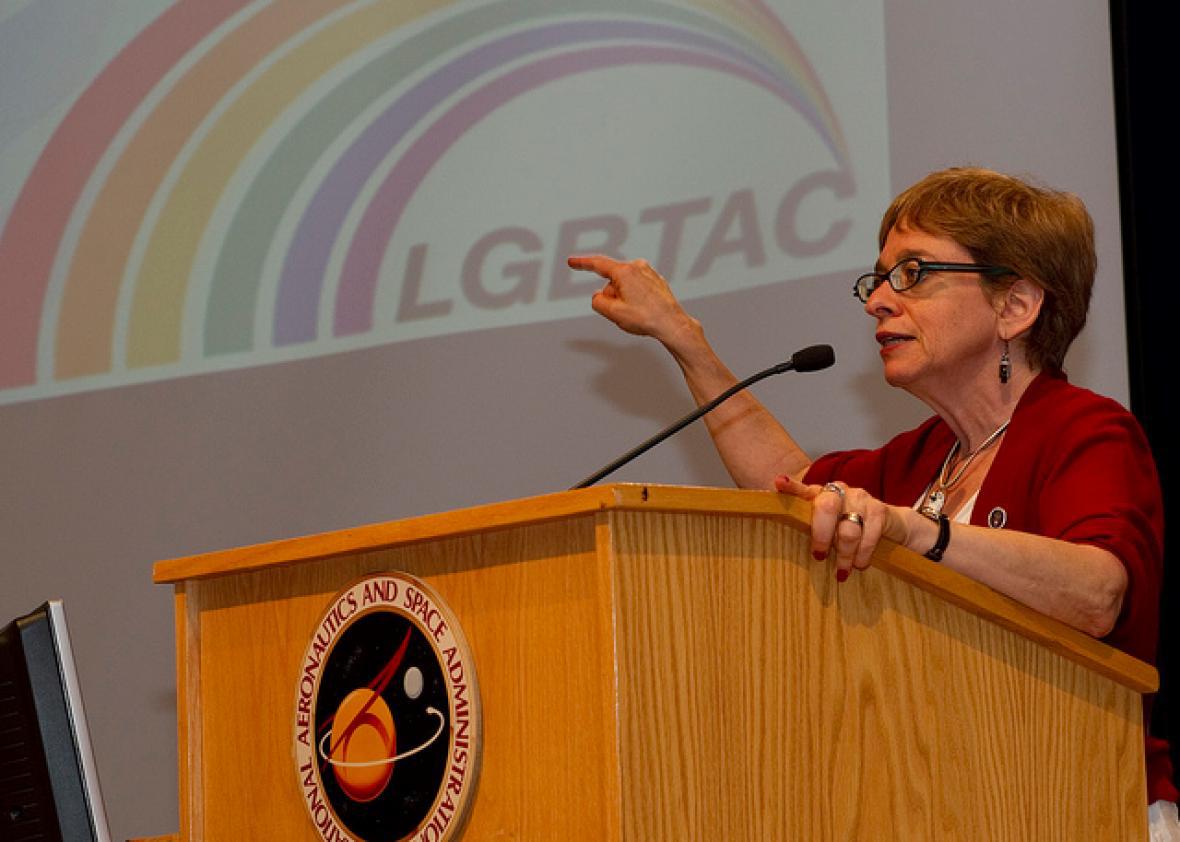On Monday, the Equal Employment Opportunity Commission’s Select Task Force on the Study of Harassment in the Workplace released a comprehensive and startling report on harassment in the United States. Authored by EEOC Commissioners Chai Feldblum and Victoria Lipnic, the report chronicles the ongoing struggle to stamp out harassment—racial, sexual, and otherwise—in the American workplace. Notably, the task force included findings on sexual orientation and gender-identity-based harassment; the EEOC has led the charge to prohibit both under existing federal law barring sex discrimination.
Nearly one-third of the 90,000 charges of discrimination received by the EEOC last fiscal year included workplace harassment. That includes sexual harassment, from Mad Men–style boorishness to anti-trans persecution—as well as racial and ethnic harassment. While calling this form of harassment “understudied,” the report notes that an alarmingly high number of workers—perhaps up to 60 percent—have experienced race or ethnicity-based harassment at the workplace. Consider the disturbing story of Contonius Gill, a black truck driver for the North Carolina–based A.C. Widenhouse, whose co-workers called him “nigger,” “coon,” and “monkey.” One co-worker gave Gill a noose and said: “This is for you. Do you want to hang from the family tree?” When Gill complained about the harassment, he was fired. (He complained to the EEOC, and a jury ultimately awarded $200,000 in damages to him and a similarly wronged colleague.)
The numbers are just as distressing for LGBT workers. Surveying various studies, the report shows 35 percent of gay and bisexual people who are out at work suffer from harassment. Up to 58 percent of LGBT people have heard derogatory comments about sexual orientation or gender identity in the workplace. In one study of LGBT employees, 41 percent of respondents reported being verbally and/or physically abused at work or having their work spaces vandalized. In a survey of trans workers, 50 percent of respondents reported workplace harassment, including 7 percent who reported being physically assaulted at work because of their gender identity, and 41 percent who reported being asked unwelcome questions relating to their gender identity. Forty-five percent reported having been referred to by the wrong pronouns “repeatedly and on purpose” at work.
And yet, despite these bleak numbers, roughly 3 out of 4 individuals who experienced workplace harassment never even talked to a supervisor, manager, or union representative about the illegal conduct. Reduce that number, and we could go a long way toward ameliorating workplace harassment. Feldblum and Lipnic suggest new modes of training that do more than help companies avoid legal liability, such as bystander intervention training to encourage co-workers to intervene when they witness harassment. “We cannot be complacent bystanders and expect our workplace cultures to change themselves,” the report concludes.
That, of course, is quite true. But it seems critical to note, especially with regard to LGBT harassment, that we also must not remain complacent bystanders in a broader culture that vilifies gay and trans individuals without expecting to see consequences trickle down into the workplace. Cultural homophobia and transphobia are closely intertwined with workplace harassment of LGBTQ people. So long as the former is acceptable, the latter will remain nearly intractable. The EEOC can develop and apply the law to protect workers, LGBT and otherwise, as best it can. But it’s up to the rest of us to create a culture where that kind of behavior simply isn’t tolerated.
